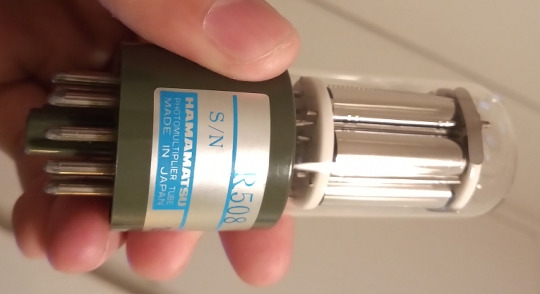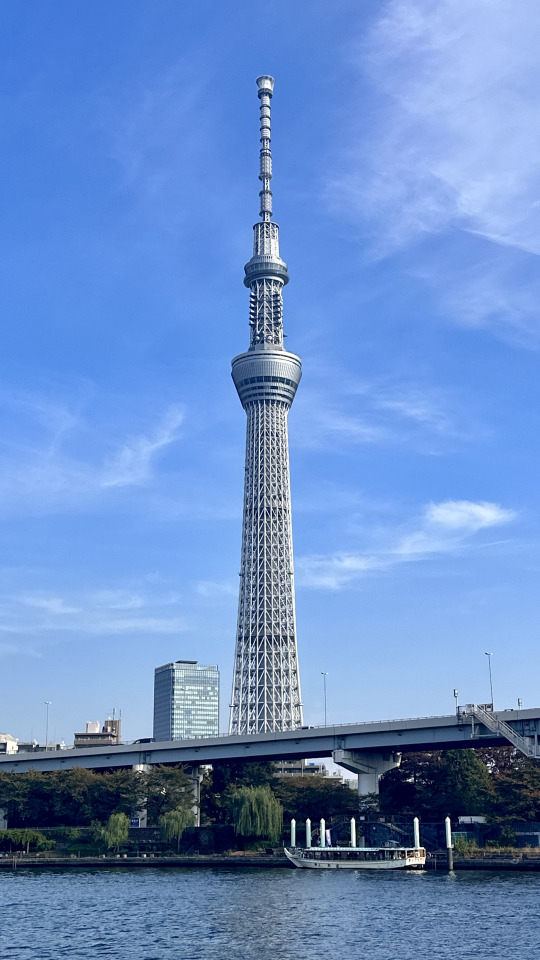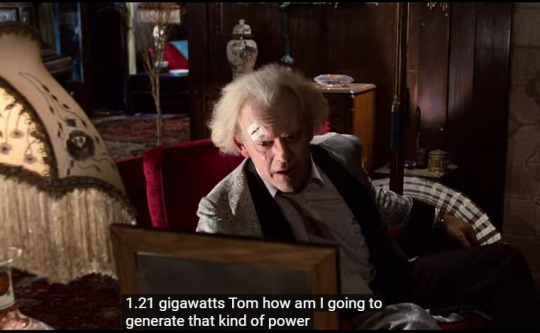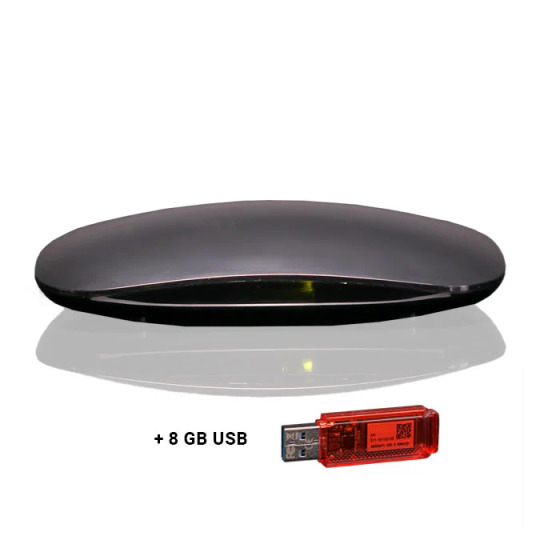#Community Radio Technical Setup
Explore tagged Tumblr posts
Text
Technical Aspects and Infrastructure for Running a Community Radio Station
Behind every captivating broadcast from a Community Radio Station (CRS) lies a complex and well-maintained technical setup. It’s not just about having the right equipment; it’s about creating a cohesive infrastructure that keeps your station running smoothly and your community engaged. Whether you’re just starting out or looking to upgrade your setup, this guide will walk you through the…
#Audio Processing for Radio#Broadcast Automation Software#Cloud Backups for Radio Stations#Community Engagement#Community Radio Station#Community Radio Technical Setup#Content Management for CRS#CRS Equipment Maintenance#CRS India#CRS License India#CRS Networking Setup#CRS Software Updates#CRS Studio Design#Data Backup for CRS#discover page#Emergency Preparedness for CRS#featured#FM Transmitters#Generator for Radio Stations#IT Infrastructure in Radio#Microphone Selection for Radio#mind scrolls#Networking for CRS#new blog#Radio Antenna System#Radio Broadcast Equipment#Radio Broadcast Reliability#Radio Mixing Console#Radio Power Backup#Radio Programming Automation
0 notes
Text





more Ninjagelion AU
Setup: In the aftermath of a cataclysmic event on the Dark Island where humans accidentally awakened an entity known as the [OVERLORD] the world was plunged into eternal chaos. 20 years later, Ninjago has managed to rebuild. Now in New Ninjago City, a bustling and lively hub at the heart of Ninjago, has been under attack by monsters- onis, dragons, serpents, unexplainable beasts,- creatures made from the [OVERLORD]'s darkness. Luckily the Special Division ELEMENTS is here to protect the realm from these monstrous threats, with the NINJA mechs. This cant be possible without some valuable members of the team!
Characters, lore, and more ↓
Characters:
Pixal: In this au she's a human scientist, and probably the one person who knows the most about how the NINJA mechs are created. She's in charge of the technical division, and head of research and development. During a monster battle, her order's are second to Cole's. Her highest priority is the integrity of the mechs, to the point she might be a bit negligent of the safety of their pilots. Pixal is deeply involved in some suspicious agendas involving the secret entities hidden under the base, and while she's the most knowledgeable person in the force, she's not the most trustworthy. Pixal is Zane's personal "doctor" and knows more about his schematics than anyone else. She created the Nindroid plugs (aka the Dummy system, an autopilot of sorts) with his personality data. Pixal is also one of the few people who know what happened to the original Dr. Julien and Echo.
Jay: For a little history on him, Jay is on the younger side, have graduated from college a couple of years ago. He originally interned here as an electrical engineer in the Weapons Deparment, but Pixal saw his skill and ingenuity and gave him an unrefusable return offer in the R&D department as her right hand. Jay's parents, Ed and Edna Walker were colleagues of Cyrus Borg and were involved in the engineering and design of the Geofront and NNC's civilian safety infrastructure, so Jay's always been somewhat interested in ELEMENT's work. It was kind of a dream come true when the Pixal Borg hired him. During monster attacks, Jay's in charge of making sure the NINJA mechs operate properly, have access to their weapons and gear, and making sure the NNC fortress moves as needed. Jay's always seen with his goggles and he almost never follows uniform protocol.
Jay is also one of the few Technicians who personally work with the Pilots, he's one of the first people Lloyd warmed up to at ELEMENTS, and he becomes kind of a big brother figure to him after one particularly crazy mission when he has to personally go out onto the field with Lloyd in Unit-01. When Nya arrives the pair work together a lot outside of pilot training, but Nya definitely likes him and he... needs to figure some things out. whoops!
Skylor: Having grown up in the aftermath of the 2nd (Overlord) Impact, Skylor's seen a lot of destruction and cruelty, even first hand from her own father who lead a doomsday cult that wreaked havoc on innocent communities trying to survive in the near apocalyptic event. Vowing to protect the world from similar chaos, she joined the NINJA program's tactical division. When the monster attacks began, she's in-charge of monitoring the enemy's health, pilot life signs, and mapping.
Dareth: His last name is Presley bc of the Elvis hair and inspiration lmao. He's not really a high ranking member of the organization but Cole and the others seem to really trust him, despite his mess ups. Dareth normally handles ferrying radio messages between ground teams and mission control. Dareth is a relaxed guy who values a positive work environment, even if that kind of makes him a bad employee. He's a very good uncle figure to a lot of members of ELEMENTS
MORE Cole: Cole is the leader of the tactical division. He was drafted into the military when he was only a young teenager in the aftermath of the [OVERLORD] but he was recognized by Wu and not long after he completed college and grad school he was quickly hired by ELEMENTS to oversee the tactical division. He's vengeful towards the Overlord's darkness monsters because his mother Lily was the captain of the disastrous expedition to the Dark Island 20 years ago. The dog tags he wears are his own and his mother's.
Lloyd and Zane, on neural headsets: As pilots of a NINJA mech they have a lot of pressure on them, obviously this can cause a lot of mental turmoil and stress. In order to pilot a mech they must synchronize their own mind to their mech's soul*, so stress isn't really a good thing for a pilot to have. Zane was programmed to not experience such emotions, but over the course of the series, its proven that he grows to feel quite strongly and become more human. Despite his programming, the lack of emotion early on was actually a detriment to his ability to pilot, since the NINJA soul wouldn't be able to synchronize it's feelings with an entity that feels nothing. Sometimes its necessary for pilots to wear more complicated neural headsets and spinal connections for more controlled sync testing. During the cross-sync experiment when Zane and Lloyd traded units, they were stuck wearing extra uncomfortable test suits -- too many wires and junk! The only downside to extra connection is that the mech could overload and go berserk. (which big surprise, happened!), so usually Lloyd, the designated Unstable Pilottm, only needs the barebones neural interface in most situations.
#lego ninjago#ninjagelion au#evangelion#I have a really fun idea Jay for this au. even when he's literally just tech support he's still so fun and cool and badass. to me.#r.e. ja/ya: they're both adults in this au but nya being a pilot and jay being a higher rank makes the power dynamic a little tricky?#eh see it as one sided or unrequited for now#pixal and zane mystery will be elaborated on later but they're *definitely* not romantically involved in this au lol.#I'm also gonna come up with more mech design ideas and alternat plugsuit stuff. especially the really crazy scifi ones.#i have this mini arc with unit-00 cross synch test and morro in mind that combines the magi/supercomputer hijack infection angel storyline.#and poor lloyd does (not) want to be stuck tangled up in so many cables and wires with morro in the cockpit with him.#my art#doodles#pixal borg#jay walker#skylor chen#dareth ninjago#zane julien#cole ninjago
358 notes
·
View notes
Note
I've got a world-building/combat question. I have these two warring nations in my setting, both medieval-ish tech levels. One of them figures out how to make magical flying craft that are basically WWI airplanes. The other country invents dragon riders in response. Since then, they've been at war for ~60 years. I'm trying to figure out how the heck an air force would alter medieval combat strategies. If you've any suggestions, I'd appreciate it
The first, and biggest world building problem is that magic is part of your overall tech level. Ironically, Diskworld is an excellent example of how magical technology can basically function as an alternate path for social and technical development, though, honestly, a lot of high-magic settings tend to have tech leakage from magic.
One of the more common examples that comes to mind are “magical radios.” Either it's an enchanted device that allows person to person communication, or it's direct telepathic communication, but whatever it is, it serves a fundamentally similar role to a handheld radio, or (depending on how it works) a phone. The thing is, it's functionally a magical replacement, and it would affect society in much the same way those technologies have.
This is a long way to say, if your magical combat technology has WWI-grade planes, there is a very real possibility that a lot of your warfare is also going to be at a similar magi-tech level, if not more advanced. Having written that, I'm reminded of The Red Star comic series; though, that has a heavy Soviet aesthetic, and is not-at-all medieval.
Again, it doesn't really matter if you have fully-automatic firearms, or if you have a bolt thrower that conjures and propels crystals at hyper-sonic speeds into your foes. If they have a similar rate of fire, and similar accuracy, the meaningful change is texture. Your characters might see tiny crystal fragments shattered on the floor, or embedded into walls, instead of bullet holes. There may be no smell, or conjuring the crystals might leave a different odor. A handheld lightning projector might leave scorch marks, and a scent of ozone, for instance.
Magic might also factor into armor and defenses. If you can use a magical ward to dispel conjured objects, that might be extremely useful for fortifying specific targets against incoming conjured attacks, but it would likely be wholly ineffective against the lightning projector, or some other kind of directed energy beam weapon.
“Inventing,” dragon riding as a response to someone else making a magical airship, does strike me as an odd cause-and-effect. If dragon riding was that easy, it would seem likely that someone would have militarized them long before that point. Inventing flying objects that could function as a hard counter to dragons feels a little more natural. Or, magical, AA installations. Though, this is something that could probably be finessed, if you're really committed to the setup. It's also worth remembering that air superiority is an extremely potent advantage, even if you're not sure what to do with it, meaning that if one side suddenly had fliers, and the other side couldn't come up with a counter in short order, they'd be picked apart, and the war wouldn't have this 60 year timescale.
If it seems like I went to ranged weapons very quickly, there's a simple reason. You can't joust from a plane. Your options are to either propel objects at people, or drop things on them from above. Dragons also (usually) have the option to breathe fire on them. Now, firearms did exist in the late medieval era. So, that's not that far out of range. I'm less sure of the invention of bombs. At least, of the variety you could deliver to your enemy on the battlefield. Though, it occurs to me, you could probably use a catapult or trebuchet to deliver an explosive payload, if the explosives were stable enough to survive launch, but sensitive enough to detonate on impact. (Of course, if you have some kind of magically primed explosive, that stays stable until it is ejected from the catapult, and then explodes on impact, that would work.)
Looping back to the timescale again, this would require some pretty potent defensive capabilities. A dragon, with the ability to breathe fire, and the capacity for strategic thinking, could easily starve out an entire kingdom, simply by making a habit of torching all the cropland it could find. It doesn't, particularly matter if it gets all the food, so long as it torches a meaningful percentage of the available crops. When you have farmers going hungry, you're going to see food production dipping, exacerbating the problem. When you have soldiers going hungry, they're not going to be able to fight as effectively. When you have the peasantry going hungry, you're going to see civil unrest, and probably rebellions coming for their lord's head. You can't wage a war against a hostile nation under those circumstances. (In fact, there were multiple peasant revolts during the Hundred Years War, which basically stalled out France's ability to fight. England also suffered multiple peasant uprisings at roughly the same time. Though, those were motivated by taxation, which ends in a similar place.)
A related concept that's somewhat hinted above, is that wars are expensive, and both France and England found themselves facing uprisings because of taxation needed to support the ongoing war. (The irony being that both nations encountered this at roughly the same point in history. Roughly 40 years into the war.) A war that's been going for 60 years will likely have ravaged the economies of the involved nations. This isn't necessarily something that your characters would be aware of, unless you expand the context to show non-wartime economies.
The simplest explanation for why this happens is that any money you spend prosecuting the war are products that you never see returning value from. The money itself doesn't leave the economy, but the natural resources, and labor required, are expended non-productively (from the perspective of economic growth.) So, if you have a peacetime merchant, they're moving money around, but they're paying for their goods, and then those goods are going to consumers, who may also be contributing to economic activity with those goods (this even applies for food, you can think of that as a necessary component to any productive activity.) If you're a wartime merchant, selling weapons to the military, you are contributing to economic activity when you buy the weapons, but when they're sold to the crown, that's no longer productive. Those weapons leave the economy and never return. Worse, any soldiers who are permanently wounded, or killed, are also removed from the economy. Over time, this can destroy the most prosperous of nations. (To be clear, this is more advanced economic analysis than anyone in the middle ages would have had. So, the idea that wars are expensive was understood, but the exact reasons it slowed the economy were not.) And, this kind of thinking is another form of technological advancement. Ideas for understanding complex systems have become more intricate and detailed over time. While it's not the concept of, “invention,” that you might be used to, it is a similar form of progress.
So, how would this look in your world? There's a lot of potential consequences, most of which are not contradictory.
An impoverished lower-class is very likely. Whether that includes wounded veterans or not is a little more up in the air, though after 60 years, military pensioners, and those who suffered life-altering injuries on the battlefield are likely to be a common sight, either on the street or in the poverty line. (Especially if the crown is willing to enforce drafts and conscription.) At this point, that might be a very real possibility.
A struggling aristocracy is also likely, with former major power players who've declined into poverty. This might take the form of borderline abandoned estates that have been taken over by the crown or squatters. (Probably not both at the same time.)
Serious inflation is likely (and could be why formerly stable guild members, merchants, and even some of the aristocracy might now find themselves struggling.) I realize this point isn't something most really think of when you're trying to write a fantasy world, but it's worth considering. More likely this will be seen in food prices having increased over time. So the major symptoms you'd likely see would be decaying structures that no one has the resources to maintain, rising food prices, and generalized poverty. Even in a fairly magically advanced setting, a lot of these things would, likely, still happen. Of course, if the dragons have been used to destroy the agricultural base, things would be even worse in that nation. To be clear, food and taxation riots are not off the table there.
This is sort of a non-sequitur, but if you have a setting with classic transmutation (lead, or other base metals, into gold), you would actually see inflation with every batch of transmuted gold hitting the market. It's sort of an amusing note on the fantasy of being able to produce as much money as you want, but ultimately, it's actually harmful from a macroeconomic perspective. (Basically, the same reason counterfeiting is a problem.) Though, it is a possible hook for criminal groups in one of those nations, producing counterfeit gold via transmutation.
There's also a real world example from 2020, where a jewelry company had fabricated “fake,” gold bars as collateral to secure loans. In total, they claimed to have 83 tons of gold used to obtain loans worth over 2.8 billion dollars, from 14 different creditors. Except, when they defaulted on those loans, and were forced to hand over the gold, it was discovered that these were in fact gold plated copper bars.
I realize the question was about the flying forces specifically, but so long as that advantage is dealt with quickly, and neither side is able to monopolize air superiority, that's not going to change nearly as much as having that level of magical advancement would on its own, and of course, the general consequences of having a war that's been going on for long enough that multiple generations have died on the battlefield. That's going to a bigger effect on your world as a whole.
-Starke
This blog is supported through Patreon. Patrons get access to new posts three days early, and direct access to us through Discord. If you’re already a Patron, thank you. If you’d like to support us, please consider becoming a Patron.
#writing reference#writing advice#writing tips#how to fight write#starke answers#Starke is not a real economist
207 notes
·
View notes
Text
Dr. Stone chapter 1D Trivia post
Spoilers ahead


We knew there was a slippery slope but we didn't know which one it was.
First things first, as we saw, Kaseki was not dead after all, and neither was Francois.
This clears things from chapter 232.5 (Dr. Stone Terraforming) where Kaseki was not shown at all, and although Francois was shown to be at the plane at the moment of the crash, they were never shown to be rescued.

We do get a glimpse at Senku throughout his lifetime (hypothetically at least). The pictured time machine, just like the large one they are building, features the telltale disk from the movie "The time machine" (duh) from 1960, based on a novel by H.G. Wells, written in 1895.

We also see him using a bunch of yagi antennas again, as well as a small satellite dish, all pointed in different directions in his homebrew setup, perhaps in an attempt to catch the signal regardless of which direction it's coming from. A concern I've heard is why would Byakuya contact Senku's future attempt but not the one from his childhood, and the answer likely boils down to the technology. As Xeno said they used a specialized detector to spot tiny bursts of petrification beam

I am not sure what such a detector might entail, but since the petri beam involves a flash of light, perhaps something like a photomultiplier tube could do it, as they can detect individual photons

The Tokyo Sky Tree is a radio tower, housing a restaurant and an observation deck, it is also the tallest manmade structure in Japan with a height of 634 meters, or 532.7 times the canon height of Suika in chapter 178.

Here it looks like they've drawn the wrong design for the medusa capsule, this one has a speaker on the inside like the original that was sent to the moon, whereas once whyman was discovered, they changed the design to one with a small antenna in its place, and a speaker/microphone on the outside for them to communicate.

This is what I feel like in university

Yes we are

next up, energy

1.21 Exawatts has no basis I know of other than being a reference to the 1.21 Gigawatts used by the time machine from Back to the Future. 1 exawatt = 1000000000 gigawatts, so I guess Dr. Brown's machine was actually very fuel efficient.

The (exa)watt is technically not a unit of energy but rather of the rate of energy transfer (or how fast energy's being delivered in layman's terms).
I assume he means (exa) watt-hours, a multiple of the watt-hour, which is an energy unit handy for working with electricity calculations. This amount of energy is equivalent to a bit shy of 900000 megatons of TNT. However, if you could capture 100% of the sun's output (and I mean all of it, a la dyson sphere, not just what hits the earth, and with 100% efficiency) and store it, you could collect that amount of energy in just under 30 seconds. This amount is also probably larger than the consumption of humanity over the last 60 years. It is in fact larger than the energy consumed wordwide between 1800 and 2010 by a factor of about two, going from adding and converting the data here.
https://www.encyclopedie-energie.org/en/world-energy-consumption-1800-2000-results/

Helium 3 is an isotope of helium with a nucleus made of 2 protons and 1 neutron (unlike normal helium which consists of 2 and 2 of each).
Because it's a very light gas, it tends to float away from the earth and get swept off into space much like regular helium does, and it is believed that larger amounts of it will be available on the moon, where it is formed naturally in a slow but steady supply when natural lithium is bombarded with neutrons from cosmic rays. Helium 3 can theoretically function as fuel in a fusion reactor, having the advantage that it does not release neutrons in the reaction, meaning it does not bombard other materials inside the reactor making them radioactive (and He-3 is not radioactive itself either).
The big issues are its low availability and the fact that a reactor for this fuel would need even higher temperatures than the reactors we are experimenting with today, and we are barely starting. On that note, Tsukasa eating chip


These robots are very strange, they walk on their claws, only having wheels at the back and carrying what looks a lot like an old time minecart. If anyone knows what the name Johnny 7 might be referring to, let me know. So far I can see that there was a sentient robot named Johnny 5 in the 1986 film Short Circuit, which looked like this.

I could also note that the robots have "Battery A" and "Battery B" noted on them.
It might just be a coincidence, but I like to think it might be a nod to an early project in the series, the cellphone.
The cellphone had two battery packs, the lead acid pack to run the vacuum tube filament, and Gen's manganese battery pack, which ran the tube anode. Historically these two battery packs were designated "A" and "B".

For the record this is also the reason you can buy AAA, AA, C, and D size cells, but no B batteries. Those batteries used to exist, but they don't anymore, since the equipment they powered is long obsolete. Next up, Chrome has a flashback to Ruri's flashback.


Kirisame's headpiece has reverted to the seldom seen spiral horn version, she is most typically seen with the one shaped like cat ears.

Next up:

No, I will not apologise


This does not seem to be the same restaurant mentioned in chapter 43, though I guess it could have changed, since Senku seems older (might it be the restaurant in the sky tree?)

Also Senku puts on Byakuya's coat that was on the back of his chair.

Speaking of chapter 43...

Ukyo is not well

It's no longer Nanami Corp, it's just Ryusui

To conclude, my take on what is happening

It's been hinted multiple times that we may see the involvement of alternate timelines, which comes as an answer to the occurence of a paradox if Senku were to travel back in time or even just contact himself. The title of the chapter comes to echo this. Higher dimensions have been a bit of a popular topic lately with people making games in four dimensions, etcetera. This however is not that by the looks of it, the fourth dimension mentioned would be an additional time dimension, which can be interpreted as the existence of convergent or divergent timelines. One of the less obvious things that remain to be seen is how Byakuya (or someone pretending to be him) knew when and where to contact someone in a different timeline. We also don't know where in time they are located. It is assumed at first that the incoming message is from the future but if we are dealing with a parallel universe it may as well be coming from the past or even be coming in in "real time" (as if such concepts of relative time held up in multidimensional time).
Suika cute pose

#dr. stone trivia#dcst#dr stone#dr. stone#drstone#dcst senku#dr stone senku#senku dr stone#senku ishigami#dcst byakuya#dr stone byakuya#byakuya dr stone#byakuya ishigami#dcst xeno#dr stone xeno#xeno dr stone#xeno houston wingfield#xeno houston#dcst suika#dr stone suika#suika dr stone#dcst kohaku#dr stone kohaku#kohaku dr stone#dcst tsukasa#dr stone tsukasa#tsukasa dr stone#tsukasa shishio#dcst chrome#dr stone chrome
63 notes
·
View notes
Text
How Can Wear Communications Improve Your Connectivity in Surrey?

Whether you're upgrading a home network, building out commercial infrastructure, or setting up a reliable TV system, the quality of your installation makes all the difference. In Surrey, where everything from rural homes to corporate offices demand high-speed, stable connections, Wear Communications stands out as a trusted provider of professional WiFi installation, satellite installation, aerial installation, and network data cabling services.
With decades of technical experience and a strong focus on reliable performance, the team delivers future-ready solutions to properties across Surrey. Here’s how their services ensure better connectivity and lasting value.
WiFi Installation Surrey – Eliminate Blackspots and Boost Performance
Slow internet and patchy signals are more than just inconvenient—they disrupt daily life and work productivity. Wear Communications provides expert WiFi installation in Surrey, customised to suit the size, structure, and layout of each property.
Their engineers don’t just plug in a router—they analyse the building’s architecture, assess interference levels, and install systems that maximise both coverage and speed. Using high-quality mesh networks, business-grade access points, and secure configurations, they ensure every room gets reliable WiFi.
Ideal for:
Home offices and remote work
Multi-device households
Online gaming and streaming
Small to medium businesses
Whether it’s a top-floor flat in Woking or a detached property in Epsom, Wear Communications brings consistent internet performance throughout your space.
Satellite Installation Surrey – Accurate Setup for Stronger Signals
Modern entertainment depends on more than just smart TVs—it requires properly installed satellite systems that deliver uninterrupted viewing. With Wear Communications' expert satellite installation in Surrey, you can expect professionally aligned dishes, robust signal strength, and discreet installation that suits the look of your home or office.
The team supports:
Sky, Freesat, and international systems
New dish installations and system upgrades
Repositioning, alignment, and fault correction
Multi-room connectivity for households or shared buildings
They work efficiently while respecting your property—minimising disruption while delivering flawless satellite reception.
Aerial Installation Surrey – Crisp Reception for Every Screen
Still relying on Freeview or digital aerial services? You’re not alone. Thousands of Surrey residents watch TV through aerial connections. However, poor installation or outdated equipment can cause interference, weak signals, or full loss of service.
That’s where Wear Communications steps in, offering top-tier aerial installation in Surrey tailored to your environment. From new builds to heritage properties, they ensure your signal is strong and stable—regardless of location or building type.
Their aerial installation services cover:
Digital TV aerial systems
DAB and FM radio aerials
Signal testing and fine-tuning
Aerial upgrades, repositioning, and fault repairs
Every job includes a full assessment to ensure the aerial works in harmony with the surrounding signal landscape, avoiding tall trees, obstructions, or reflective materials that can affect performance.
Network Data Cabling Surrey – Smart Wiring for the Digital Age
WiFi has its place, but when you need speed, stability, and security, nothing beats structured cabling. Businesses, landlords, and homeowners alike turn to Wear Communications for dependable network data cabling in Surrey that supports high-bandwidth applications, security systems, and smart building setups.
Their data cabling solutions include:
CAT5e, CAT6, and CAT7 installations
Structured cabling design and layout
Ethernet point installations for homes and offices
Fibre optic cabling for ultra-fast connections
Patch panels and server rack configuration
Every cable is routed cleanly and tested before sign-off, ensuring the network is ready to support remote working, VoIP, CCTV, or any other data-heavy setup.
Tailored Solutions for Residential and Commercial Clients
What makes Wear Communications different is their ability to handle both residential and commercial projects with equal care and precision. Whether you're a homeowner in need of a new aerial, or a facilities manager overseeing a data cabling rollout in a multi-storey office, their team delivers scalable solutions with a personal touch.
Clients include:
Homeowners improving their entertainment systems
Builders needing installation across multiple plots
Landlords ensuring strong signal across rental units
Offices upgrading to modern, high-speed networks
Retail stores requiring strong WiFi for POS and CCTV
Every job is handled by trained engineers who understand the specific connectivity demands of each environment.
More Than Installation: Ongoing Support You Can Count On
Connectivity isn’t just about getting things set up—it’s about making sure it keeps working long-term. Wear Communications offers more than just installation; they also provide diagnostics, upgrades, maintenance, and system health checks to ensure your setup continues to deliver.
This is especially important in larger homes, older buildings, or environments with changing tech demands. As smart homes and connected offices become the norm, your system should grow with you.
They also offer advice on:
Device compatibility
Equipment positioning
Network security
Future-proofing with cabling and hardware
This consultative approach ensures you're not just connected today—but prepared for tomorrow.
Get Connected with Confidence – Choose Wear Communications
If you're looking for:
Professional WiFi installation in Surrey
Accurate and secure satellite installation in Surrey
Durable and discreet aerial installation in Surrey
Future-ready network data cabling in Surrey
Wear Communications offers everything you need under one roof.
Whether you're planning a new setup, fixing ongoing issues, or upgrading for better performance, their team is ready to help. With years of experience, a strong reputation in Surrey, and a customer-first mindset, they’re the go-to choice for communication system installations across the region.Contact Wear Communications today to book a site visit or speak with a qualified engineer about your property’s connectivity needs.
#WiFi installation surrey#satellite installation surrey#aerial installation surrey#network data cabling surrey#wear communications
1 note
·
View note
Text
John 5:18
So now it is THE TOWER. I don't think any towers have been mentioned in this story so far?

Obligatory all Christians believe in Zombie Jesus so it's not that weird interjection here

There has definitely been talk of like, programming constructs and so forth and it was made to sound pretty technical and not at all this kind of free-form whatever that John is doing here. Someone commented a while back that John at some point made a comment that necromancy was so much simpler before there were theorems, or something along those lines, as an indication that John didn't really know what was going on with Lyctorhood, or why he didn't know what was up with Harrow or G1deon, but I wasn't able to find the quote even with the Nook app's text search feature and then I moved on to the next chapter and lost the comment. If someone knows where that quote is, please let me know? I definitely remember it, I just don't remember where it was

So by process of elimination, the engineer was G1deon

I thought it was going to be something worse from the setup of that first paragraph and the fact that this is a story about the world ending, but no, they were just streaming necromancy on twitch
I started thinking of the lack of internet in the Nine Houses is actually a good thing or a bad thing overall, but I think a single multi-planet internet would be difficult to set up unless someone invents some kind of truly epic wifi signal, but hey, Canaan House could communicate with John's flagship using radio, so maybe? But yeah, a lot of terrible things have happened with the internet, but it also has made a lot of stuff possible that just was not possible before, so I don't think things would actually be better without it
10 notes
·
View notes
Text
Starting an Online Radio with Shoutcast/Icecast Hosting

Do you have a passion for music, a love of sharing, and a desire to connect with listeners worldwide? Then starting your own online radio station might be your perfect calling! With the right tools and guidance, you can create a platform to broadcast your voice, curate unique playlists, and build a vibrant community around your favourite sounds.
In this blog post, we'll explore the exciting world of starting an online radio with Shoutcast/Icecast hosting.
Step 1: Understanding Shoutcast/Icecast Hosting
Shoutcast and Icecast are popular for internet radio streaming, enabling broadcasts similar to traditional radio. There are hosting services that support these platforms, allowing your internet radio station to stream to a global audience reliably. These specialised services are tailored to meet the needs of internet radio broadcasters, ensuring high-quality streaming for listeners.
Step 2: Planning Your Radio Station
Before diving into the technical setup, plan your station. Decide on the genre of music or type of content you wish to broadcast. Also, consider the structure of your programming—will you have live shows, pre-recorded segments, or a mix of both?
Step 3: Choosing the best Hosting Plan
Select a hosting plan that aligns with the size of your audience and bandwidth needs. Look for options that accommodate various types of radio stations, ranging from smaller community stations to larger, established ones. Visit Ucartz.com and explore the variety of Shoutcast/Icecast hosting plans available.
Step 4: Setting Up Your Broadcasting Software
After choosing your hosting plan, you'll need broadcasting software to manage and stream your audio content. Tools like SAM Broadcaster or Mixxx are popular choices for this purpose. These software applications can help you efficiently manage your playlists and broadcasts and connect to Shoutcast/Icecast servers for streaming.
Step 5: Designing Your Radio Station’s Website
For your radio station, a website is essential. It serves as the primary platform where listeners can learn about your station, check programming schedules, and stream your broadcasts live. Consider choosing a website hosting provider that offers integration with your radio hosting. This integration ensures a smooth and seamless experience for your listeners, both for browsing your site and enjoying your live audio content.
Step 6: Going Live and Promoting Your Station
With everything set up, it’s time to go live! Promote your station through social media, forums, and community groups. Engage with your audience and gather feedback to refine your station's content.
Conclusion:
Starting your online radio with Shoutcast/Icecast hosting can be a thrilling and rewarding experience. With Ucartz’s Shoutcast/Icecast hosting services, the technical side is taken care of, letting you focus on creating great content for your listeners.
Visit Ucartz.com today to embark on your journey to starting an online radio station!
5 notes
·
View notes
Text
Precision testing for RF Absorbers | DMCRF

When it comes to Precision testing for RF Absorbers, the role of specialized equipment cannot be overstated. At Diamond Microwave Chambers Ltd, we focus on delivering industry-leading RF solutions that enable exact electromagnetic performance analysis. With an unwavering commitment to innovation and quality, our RF Absorbers are engineered to meet the strict demands of modern testing environments. Whether you're in aerospace, telecommunications, defense, or research, having the right RF absorption materials is critical — and that’s exactly what we provide.
What Are RF Absorbers?
RF Absorbers are materials specifically designed to attenuate radio frequency energy. These absorbers are commonly used inside anechoic chambers, shielding enclosures, and test labs to reduce reflections, prevent interference, and simulate free-space conditions. They absorb incident electromagnetic waves and convert them into heat, significantly minimizing signal bounce and ensuring accurate test results.
RF Absorbers come in various shapes and materials, such as pyramidal foam, ferrite tiles, and hybrid absorbers, each suited for different frequency ranges and testing applications. Whether you're conducting antenna pattern measurements, EMC compliance tests, or radar cross-section analysis, the effectiveness of your test environment depends heavily on the quality of RF absorbers used.
Why Precision Testing Matters
Precision testing for RF Absorbers ensures that electronic devices perform optimally in real-world scenarios. Poor testing environments can lead to inaccurate readings, compliance failures, and potential product recalls. At Diamond Microwave Chambers Ltd, we engineer our absorbers to offer consistent performance across a broad frequency spectrum, ensuring your testing conditions replicate operational reality as closely as possible.
We work closely with engineers, researchers, and quality assurance teams to design RF absorbers that provide repeatable, interference-free test results. From initial design to final installation, we offer end-to-end support, helping clients create environments where test accuracy is never compromised.
Applications of RF Absorbers
RF Absorbers are used in a wide range of applications, including:
Antenna testing – To ensure signal patterns are measured without distortion from reflections.
EMI/EMC testing – To verify compliance with electromagnetic interference standards.
Radar testing – To simulate stealth conditions and reduce scattering in radar systems.
Wireless device certification – To test smartphones, IoT devices, and wireless communication tools in controlled conditions.
At Diamond Microwave Chambers Ltd, we understand that every application has unique requirements. That’s why we offer custom absorber solutions tailored to your frequency range, chamber size, and testing needs.
Why Choose Diamond Microwave Chambers Ltd?
As a trusted provider in the RF and microwave industry, Diamond Microwave Chambers Ltd stands out for its engineering excellence, technical expertise, and customer-first approach. Our RF absorbers are tested rigorously for performance, durability, and safety. We pride ourselves on being a partner, not just a supplier — helping you build precise, compliant, and efficient testing environments.
Visit dmcrf.com to explore our full range of RF solutions, or connect with our team to discuss your custom absorber or chamber project.
In high-frequency testing, even the smallest detail can influence outcomes. RF Absorbers play a crucial role in eliminating interference and delivering reliable test results. Backed by science and crafted with precision, the solutions from Diamond Microwave Chambers Ltd are designed to support critical testing with unmatched accuracy. Whether you're building a new chamber or upgrading an existing setup, trust dmcrf.com for proven performance and expert guidance.
Visit Us: https://www.dmcrf.com/rf-and-microwave-absorbers/
Contact Us: Ph.+1(613) 915 5533
0 notes
Text
NS2 – PhD Support from Saaira Technologies: Empowering Your Research with Simulation Excellence
NS2 – PhD Support from Saaira Technologies: Empowering Your Research with Simulation Excellence
Introduction
In the realm of computer networks and communication systems, Network Simulator 2 (NS2) is a cornerstone tool for PhD scholars. It enables researchers to model, simulate, and evaluate the performance of complex networking protocols in a virtual environment. However, mastering NS2 and applying it effectively to a PhD-level research problem can be quite challenging. That’s where Saaira Technologies steps in, offering expert-level NS2 PhD support tailored to help research scholars succeed with confidence.
Why NS2 Is Crucial for PhD Research
NS2 is widely used for simulating:
Wireless sensor networks (WSNs)
Ad hoc networks (MANETs, VANETs)
TCP/IP protocols
Routing and queuing models
Mobility models and delay-tolerant networks
Its open-source flexibility and strong academic acceptance make it an ideal choice for developing new algorithms and validating research hypotheses.
Challenges Faced by PhD Scholars in NS2
Despite its powerful capabilities, scholars often struggle with:
Understanding NS2 architecture (C++ and OTcl layers)
Writing and debugging simulation scripts
Integrating new protocols or modifying existing ones
Graph generation and result interpretation
Publication-level result validation and documentation
These hurdles can lead to delays and affect the overall quality of research.
Saaira Technologies: Your NS2 Research Partner
At Saaira Technologies, we offer comprehensive NS2 support for PhD scholars in computer science, electronics, and communication domains. Our services are designed to bridge the gap between theory and simulation, helping you execute your research ideas with precision.
Our NS2 PhD Support Services Include:
Research Topic Selection We help you identify trending, impactful, and feasible topics where NS2 simulation plays a key role.
Protocol Design and Implementation Our experts assist in developing novel routing protocols or modifying existing ones to suit your objectives.
Simulation Script Writing We write and debug NS2 scripts tailored to your research model, incorporating topology, mobility, traffic, and performance metrics.
Result Analysis and Visualization Using tools like XGraph, NAM, and custom Python/MATLAB scripts, we help in analyzing and visualizing simulation outputs.
Thesis and Paper Writing Support From simulation result presentation to performance evaluation, we assist in integrating NS2 outcomes into your thesis chapters and IEEE/SCI paper drafts.
Training and One-on-One Guidance We offer live sessions and personal mentoring to help you understand every part of your simulation workflow.
Advantages of Choosing Saaira Technologies
Domain-specific expertise in NS2, NS3, OMNeT++, and other network simulators
Experienced team of PhD holders and simulation professionals
Confidential, reliable, and plagiarism-free support
Timely delivery aligned with your submission deadlines
Complete end-to-end guidance from simulation setup to final submission
Research Areas We Cover with NS2
Wireless Sensor Networks (WSN)
Mobile Ad hoc Networks (MANET)
Vehicular Ad hoc Networks (VANET)
Internet of Things (IoT)
Cognitive Radio Networks
Network Security Protocols
Delay Tolerant Networks (DTN)
5G & Next-Generation Wireless Technologies
Conclusion
If you're a PhD scholar aiming to utilize NS2 for your research but are facing technical or conceptual roadblocks, Saaira Technologies is here to elevate your research experience. With our expert NS2 support services, you can focus on your innovation while we handle the complexity of simulation and analysis.
Let your research speak through simulation—powered by Saaira Technologies.
Contact Us Today Ready to take your NS2 project forward? Connect with our PhD support team and experience the Saaira advantage.
0 notes
Text
Maa Records UK: The Go-To Affordable Sound Studio in London
In a city bursting with musical talent, finding a sound studio in London that combines quality, affordability, and professionalism can feel like chasing a unicorn. Whether you're an up-and-coming rapper, a singer-songwriter, a podcast creator, or a seasoned producer, the challenge is the same — great sound, without breaking the bank.
That’s where Maa Records UK stands out.
We’re not just another recording studio — we’re a creative hub for artists who want premium results without premium pricing. Located in the heart of London, Maa Records UK has quickly become the affordable sound studio in London that independent artists, content creators, and record labels trust.

Why Maa Records UK?
1. High-Quality Equipment, Without the High Price Tag At Maa Records UK, we believe every artist deserves access to the best tools. That’s why our studio is equipped with industry-standard microphones, mixing boards, preamps, and software like Logic Pro X and Pro Tools.
You get access to a professional-grade setup that rivals some of the most expensive studios in London — at a fraction of the cost.
2. Experienced Engineers Who Understand Your Sound We’re more than just a space with gear — we’re collaborators. Our in-house sound engineers have years of experience in multiple genres, from hip-hop and R&B to acoustic, afrobeats, and classical. They’ll help you fine-tune your vocals, balance your mix, and bring your vision to life.
Whether you're laying down a single track or recording a full album, we ensure your sound is clean, rich, and radio-ready.
Perfect for Independent Artists and Small Labels
London’s music scene is evolving fast — and it’s being driven by independent artists. Maa Records UK is here to support that movement. Our studio is designed to be flexible, accessible, and collaborative.
Need hourly bookings? We’ve got it. On a tight budget? We’ll work with you. Want to record, mix, and master all in one place? Consider it done.
We offer full-service production at affordable rates, making it easy for emerging talent to create professional content without financial pressure.
Podcast and Voiceover Friendly
We’re not just for music. Maa Records UK also caters to content creators, voice-over artists, and podcasters. Our sound-treated booths ensure crystal-clear recordings — ideal for commercial voice work, audiobooks, YouTube intros, or podcast series.
With the rise in content consumption, creators need a best recording studio near me London that supports both technical precision and storytelling power — and Maa Records delivers.
Book Your Session Today
Ready to bring your sound to life? Whether you’re recording your debut single, producing your next podcast episode, or mixing a collaborative track, Maa Records UK is here to support your journey.
Join the growing community of creators who trust Maa Records UK — the most affordable sound studio in London that never compromises on quality.
Final Note
London’s music scene is loud, diverse, and competitive — and your sound deserves to rise above the noise. Don’t settle for low-quality DIY recordings or overpriced studios.
Choose Maa Records UK. Affordable. Professional. Made for creators like you.
#Affordable Recording Studio In London#Best Recording Studio Near Me London#Affordable Sound Studio In London#Music Production Services Near Me London
0 notes
Text
How Mobile Satellite Access Is Changing Disaster Response
By Seda Hewitt
When disaster strikes, it doesn’t always look like it does in the news footage. Sometimes it’s slow—like floodwaters rising inch by inch. Other times it’s sudden—a blackout, a landslide, a wildfire overtaking a dry hillside in minutes. But one thing is nearly always true: communications fail before anything else does.
Cell towers collapse. Fiber gets severed. Even battery-powered radios go dark once the infrastructure behind them disappears.
And that’s where space quietly steps in.
Over the last few years, mobile satellite access—particularly via small, responsive satellites—has begun reshaping how emergency teams respond. It's not perfect. It's not fast everywhere yet. But it’s changing the baseline. It’s creating resilience where there was none.
Communications as the First Casualty
Let’s start with the obvious: without communication, coordination unravels.
During wildfires in the western United States, entire regions have gone dark for hours, even days. In remote Pacific islands hit by cyclones, emergency calls become impossible within minutes. And in earthquake zones, even knowing who’s alive—or where they are—can take precious days.
For first responders, aid workers, and government agencies, the absence of a basic signal slows everything down. It delays rescue. It fragments supply chains. It turns already fragile moments into full-blown chaos.
But increasingly, low-Earth orbit satellites are offering a workaround. Especially when paired with compact, mobile ground receivers.
Small Satellites, Big Reach
In many cases, we're not talking about large, traditional geostationary satellites. Those still play a role, yes. But newer SmallSats, like CubeSats and PocketQubes, offer a different kind of agility.
They're cheaper to launch. They orbit closer to Earth, which reduces signal lag. And with enough of them—working in constellations—they can offer frequent revisit times over disaster-prone areas.
What does that mean, practically?
Picture this: a regional health coordinator in a flood-affected village pulls out a ruggedized handheld device. No cell towers for 100 km. But with satellite access, they ping a message. A short one—just coordinates and status. The message travels upward, then down to a command center in another country. That loop might only take 3–5 minutes.
Not instant. But not a blackout either.
Making It Mobile
Mobility matters here. One of the biggest innovations isn’t just space-based—it’s how we access it.
Interstellar Communication Holdings Inc., based in the United States, has focused heavily on this idea: enabling lightweight, field-deployable devices to link directly with satellites in orbit. No trucks. No dish setups. Just a small piece of equipment, running on solar or battery, doing work where it’s needed most.
And this isn’t theoretical. In our HADES‑ICM mission, launched aboard a SpaceX Falcon 9, we tested real-time beacon transmission and remote configurability in-orbit. Those lessons are now shaping how small payloads can deliver usable comms infrastructure in future disaster-response kits.
Imagine sending up a shoebox-sized satellite specifically to cover a high-risk zone during hurricane season. Or having one that activates only when a seismic event is detected. This isn’t science fiction. It’s slowly becoming protocol.
Human Layers in a Technical System
All of this, though, still depends on people. Tools are great. But the real success of satellite-based disaster response lies in training, trust, and timing.
Take the Philippines, for instance—a country regularly battered by typhoons. Government responders now include satellite message relays in their drills. Local NGOs distribute simple terminals in rural villages. It’s not just about reacting; it’s about building communication literacy before disaster hits.
The more people are trained to use these systems, the more seamless they become under pressure.
A Global Conversation on Innovation
This kind of work doesn't happen in a vacuum. It’s part of a broader conversation about innovation, resilience, and cross-border collaboration.
That’s why our team at Interstellar Communication Holdings Inc. is honored to be a nominee for the 2025 Go Global Awards, held in London this November and hosted by the International Trade Council.
But it’s not just an awards show. It’s something bigger: a gathering of global businesses, each trying to solve hard problems in smarter ways. Disaster response is one of those hard problems. And mobile satellite access, though still evolving, is beginning to offer something meaningful.
An emergency connection. A window to the outside. A signal that someone’s there.
The Path Forward
We’re not claiming satellites will solve everything. They won’t.
Bandwidth remains limited. Cloud cover still affects optical sensors. And no system is immune to failure. But when terrestrial options collapse—as they so often do—satellite access becomes a lifeline. Quietly. Reliably. Invisibly.
That’s the role it’s stepping into now.
And as costs fall, payloads shrink, and apps improve, we may soon reach a point where satellite connectivity is not the backup system—but the default.
#DisasterResponse#SmallSat#MobileSatellite#EmergencyComms#PocketQube#SatelliteAccess#HumanitarianTech#HADESICM#InterstellarCommunication#GoGlobalAwards#ResilientComms#SpaceForGood#NewSpace#RealTimeAccess#DisasterTech#SatelliteInnovation
1 note
·
View note
Text
Importance of English language skills in pilot training
Aviation speaks one language globally
English is the international language of aviation. From communicating with air traffic control to understanding flight manuals and global procedures, pilots must be proficient in both spoken and written English to operate safely and professionally anywhere in the world.
English training in pilot training programs
In a professional Pilot Training setup, English proficiency is often assessed during enrollment and strengthened throughout the course. Trainees are expected to use standard aviation phraseology, respond clearly to ATC instructions, and comprehend technical documents with precision.
Why English matters in aviation
Radio telephony (RT): All ATC communication follows English-based phraseology
Exams and study material: Most ground school content is in English
Emergency response: Clear communication can save lives in high-pressure situations
Global flying standards: Airlines around the world require pilots to meet ICAO English Level 4 or higher
A lack of fluency can lead to misunderstandings, delays, or even safety risks in critical moments.

Building fluency during training
Flight schools integrate English into every aspect—briefings, classes, checklists, and simulator interactions. Regular oral evaluations, RT drills, and written assessments help students become confident and fluent aviation communicators.
Conclusion
English fluency is not just a requirement—it’s a vital skill that supports safe and efficient flying across international skies. Enroll in a Pilot Training institute that recognizes this and helps you build the language skills needed to succeed in both training and a global aviation career.
0 notes
Text
Finding the Right Music Recording Studio in Delhi – A Complete Guide
When it comes to creating high-quality music, the right environment can make all the difference. A music recording studio in Delhi offers not just the technical space to record, mix, and master your songs, but also the creative atmosphere that inspires great performances. Whether you’re a beginner or a seasoned musician, working in a professional studio can help you bring your musical vision to life.
Why Choose a Music Recording Studio?
Recording at home is possible today, but it often lacks the professional touch. Here’s why choosing a music recording studio in Delhi is a smart choice:
Professional Equipment: Studios are equipped with industry-standard microphones, soundproofing, mixing consoles, and software.
Experienced Sound Engineers: Skilled professionals ensure your recordings sound clean, balanced, and radio-ready.
Creative Ambience: A dedicated space designed for music boosts creativity and focus.
Features of a Good Music Recording Studio
Before selecting a studio, it’s important to know what to look for. Some essential features include:
Acoustics and Soundproofing: Good acoustics ensure that recordings are clear and free from outside noise.
Quality Equipment: Look for studios with high-end gear, such as Neumann microphones, Focusrite preamps, and Pro Tools or Logic Pro software.
Comfortable Space: A well-designed space that makes artists feel comfortable and motivated.
Reputation: Check online reviews or listen to past work done in the studio.
In a city like Delhi, where the music scene is thriving, finding a quality studio can be both easy and overwhelming due to the variety of options. Narrowing your search based on your budget, genre, and location will help.
Services Offered by Studios in Delhi
Studios in Delhi cater to a wide range of musical and audio needs. Here are some common services you can expect:
Vocal and Instrument Recording: Perfect for singers, musicians, and bands.
Mixing and Mastering: This final stage ensures your track is polished and ready for streaming or radio.
Voiceover Recording: Ideal for content creators, advertisers, and filmmakers.
Jingle Production: Great for branding and marketing.
Karaoke Track Recording: Many studios offer karaoke recording with high-quality background music
Some studios even provide video shooting services for music videos, reels, and promotional content.
Who Can Benefit?
A music recording studio in Delhi is not just for professional artists. It’s also a great space for:
Independent singers and songwriters looking to produce their first track.
YouTubers and podcasters needing clean, professional audio.
Voice artists recording content for audiobooks or commercials.
Bands and instrumentalists who want to record live sessions. Delhi’s studios are welcoming to all artists, whether you are starting out or already established.
What to Expect During a Studio Session
If it’s your first time in a recording studio, here’s what usually happens:
Setup and Sound Check: The engineer will help set up your microphone and do a sound check to get the right levels.
Recording Takes: You’ll be guided through multiple takes until the best version is captured.
Editing and Mixing: After recording, the studio will clean up the audio and mix it to your preference.
Mastering: This final touch ensures your music sounds consistent across all devices and platforms.
Be sure to carry your lyrics, instrumentals, and a clear idea of what you want.
Tips for Booking the Right Studio
Visit Before Booking: Try to visit the studio or take a virtual tour before making a decision.
Ask About Packages: Many studios offer hourly and project-based packages.
Check Availability: Good studios often have busy schedules. Book in advance.
Communicate Your Needs: Be clear about the kind of sound you want.
Final Thoughts
Delhi has emerged as a hub for budding and professional musicians alike. Choosing the right music recording studio in Delhi can open doors to better sound quality, professional guidance, and a smoother creative journey. Whether you want to record a song, a jingle, or even a podcast, the city’s diverse studio options have something for everyone.
So, take the time to research, compare, and connect with a studio that fits your vibe—and let the music begin!
#MusicRecordingStudioInDelhi#DelhiRecordingStudio#RecordingStudioDelhi#DelhiMusicStudio#StudioInDelhi#DelhiMusicRecording#MusicStudioDelhi#RecordYourSongDelhi#DelhiAudioStudio#ProfessionalStudioDelhi
0 notes
Text
Chris Pratt (@prattprattpratt): “So, if I’m interpreting this correctly—there are three distinct narrative threads: Story #1 follows Kowalski, Story #2 revolves around Emile, and Story #3 centers on Vera Farmiga. None of these characters have any prior connection to one another, yet by sheer happenstance, they all find themselves pursued along the same stretch of highway. Is that an accurate understanding?” Angelo (POW): “Yes, exactly. That’s the foundational premise. Three fugitives—completely unaware of each other’s existence—become entangled purely by coincidence, each being chased by law enforcement while independently navigating the same route.” Chris Pratt (@prattprattpratt): “Understood. Now, regarding Gemma Arterton’s character—she acts as the narrative bridge between these three threads. She’s a close friend of Kowalski and communicates with him via radio. That’s her role, correct?” Angelo (POW): “Yes, precisely. Gemma plays the role of a highly skilled mechanic who shares a bond with Kowalski. She’s also technically proficient and uses her radio setup to maintain communication with drivers. Through this, she becomes the conduit who facilitates the introductions between the three central characters.” Chris Pratt (@prattprattpratt): “So the three are each fleeing in isolation, and due to the high-intensity nature of the chase, they never stop to physically meet. That’s where Gemma’s role becomes vital—she serves as the narrative facilitator, introducing them to one another through her radio transmissions as they’re simultaneously barreling down the same highway.” Angelo (POW): “Yes, exactly. It’s through Gemma’s communication that they become aware of each other’s presence. And from there, they eventually decide—on the fly and under immense pressure—to form a temporary alliance. What results is a combustible, character-driven chase thriller brimming with kinetic energy and narrative potential. The opportunities for action, tension, and emotional layering are limitless. The screenwriters will have an exhilarating challenge ahead of them. And with Michael Bay at the helm, the film is poised to evolve into a spectacular, franchise-worthy spectacle—potentially surpassing the success of The Fast and the Furious series.” Chris Pratt (@prattprattpratt): “I’m thrilled to hear that. I’ll commit to portraying Kowalski in all future sequels. This is truly exciting. Thanks for the clarity, Angelo!” Angelo (POW): “You’re most welcome, Chris. Looking forward to the journey ahead. Take care!”
0 notes
Text

Listing Reference: Technician Interns X5 – TV Media and OB TechnologyListing Status: Active Position Summary Company: South African Broadcasting Corporation (SABC)Industry: Broadcasting and Media TechnologyJob Category: Engineering, Technical Broadcast InternshipsLocation: South Africa (Nationwide – deployment as per project requirement)Contract Type: Internship (12 months fixed-term)Remuneration: Market-related stipendEE Position: YesClosing Date: 17 April 2025 Introduction The South African Broadcasting Corporation (SABC) invites passionate, tech-savvy graduates to apply for Technician Internships (X5) within the TV Media and Outside Broadcast (OB) Technology Division. As South Africa’s leading public broadcaster, the SABC plays a pivotal role in delivering information, news, and entertainment to millions across the country. This internship provides a robust platform for young professionals to explore the broadcasting industry and contribute to a dynamic and fast-paced media environment. The internship is aimed at graduates who hold a 3-year National Diploma (S4/T3) in Electrical Engineering (Light Current), Communications, Computer Studies, or Information Technology. This is a 12-month structured opportunity to apply theoretical knowledge in practical, real-world scenarios, while gaining exposure to the intricacies of live broadcasting, television systems, digital workflows, and cutting-edge broadcast technologies. Job Description The Technician Intern will work under the guidance of the Head of TV Media and OB Technology and be part of a high-performing technology team. This role involves assisting with the installation, configuration, maintenance, and troubleshooting of broadcast systems and equipment to support seamless television production and delivery. Interns will: - Provide technical support for live TV and Outside Broadcast operations - Support the implementation and commissioning of broadcast-related projects - Perform preventative and corrective maintenance on equipment and systems - Assist with rigging, setup, and operation of technical broadcast gear - Contribute to systems upgrades, testing, and documentation - Monitor equipment functionality and ensure smooth transmission - Support compliance with operational, safety, and technical standards - Assist with asset verification and management - Help maintain positive internal and external client relations Ideal Candidate To succeed in this role, the ideal candidate should meet the following academic and professional prerequisites: - Must have completed a 3-year National Diploma (S4/T3) in: - Electrical Engineering (Light Current) - Communications - Computer Studies - Information Technology (NQF Level 6) - Must be willing and able to: - Work irregular hours, including weekends and public holidays - Travel and be deployed for extended periods - Operate in high-pressure, live-broadcast environments - Pass a “Fitness for Work” assessment - Work overtime when required Role Responsibility The Technician Intern will be expected to: - Support project and system implementations alongside Capex Project Managers - Contribute to design specifications, workflow analysis, and broadcasting system configuration - Maintain and support broadcasting hardware and software infrastructure - Perform fault diagnosis and emergency recovery procedures - Monitor live broadcast quality and ensure prompt troubleshooting - Administer technical documentation, backups, and asset management tasks - Support all media technology infrastructure, including radio facilities - Participate in compliance reporting and risk escalation protocols - Assist with equipment procurement through technical inputs - Uphold Occupational Health and Safety (OHS) standards and company SOPs Skills & Attributes The following knowledge and skills will set candidates apart in the selection process: - Technical Knowledge: - Deep understanding of analogue and digital TV systems - Understanding of audio and video formats, broadcast standards - Proficiency in configuring and testing digital broadcast equipment - Familiarity with Local Area Networks (LAN), Windows Domains, and system integration - Component-level fault finding, repair, and installations - Hands-on experience with metadata systems, OTT, DTT, and VOD formats - Operational Capabilities: - Rigging, operating, and maintaining live broadcast equipment - Preventative and corrective maintenance skills - Troubleshooting on-air disruptions to ensure transmission continuity - Technical/operational administrative support (e.g., reporting faults) - Software Proficiency: - Competence in Microsoft Office Suite (Excel, Word, Outlook, PowerPoint) - Experience with digital broadcasting systems and related software tools - Communication & Team Collaboration: - Strong ability to translate complex technical terms for non-technical users - Capacity to provide clear technical support to both internal and external clients - Ability to work under supervision and take initiative when necessary - Excellent interpersonal skills to maintain professional client relations - Broadcast-Specific Attributes: - Knowledge of production workflows and operational compliance - Understanding of radio communication systems, routing, metadata, and test instruments - Commitment to maintaining technical standards in a high-pressure environment - Willingness to continuously learn and adapt to evolving technologies Why Choose SABC’s Technology Division The SABC is more than just a national broadcaster—it is a legacy institution that promotes media freedom, inclusivity, and innovation. The Technology Division, specifically TV and OB, sits at the heart of this mission. As an intern here, you’ll gain access to: - Real-world Experience: Work with experienced engineers, producers, and technicians during live productions and major national events. - Mentorship: Receive structured guidance to help build your technical and professional capabilities. - Skills Development: Hands-on exposure to the latest broadcasting technologies and tools. - Career Opportunities: Enhance your employability and build a foundation for a rewarding career in broadcasting and digital media. How to Apply Interested candidates must submit the following: - A detailed and up-to-date CV - Certified copies of academic transcripts and qualifications - A motivational letter explaining why they’re suited for the role - ID copy Deadline for application: 17 April 2025 Only shortlisted candidates will be contacted for interviews. Interns must be prepared to begin their placement on the date stipulated by the SABC Technology Division. This internship at the SABC offers a gateway to the world of media broadcasting and digital television technologies. If you are passionate about engineering, excited by broadcasting innovation, and committed to delivering excellence—this opportunity is made for you. Click here to apply Read the full article
0 notes
Text
Unlimited Antenna vs The Free TV Project: Who Has The Superior DVR Solution
Choosing the right Digital Video Recorder (DVR) is pivotal in a world where antenna TV and the option of cutting the cable TV cord have become more popular. Although antenna TV has made accessing over-the-air content easy and free of charge, it’s essential to pair it with a reliable DVR. In this comparison, we will take a closer look at two popular DVR solutions: Unlimited Antenna and The Free TV Project. This article is designed to ensure that by the end, you are familiar with each solution and which one best suits your needs.

What is Unlimited Antenna?
Unlimited Antenna is specifically made to record, rewind, and pause Over-The-Air (OTA) television broadcasts. Users can capture TV shows from the air and have the option to “record”, “pause”, and “rewind” them; Unlimited Antenna surpasses conventional cable platforms by allowing users flexible access to free and premium television via an antenna. Unlimited Antenna comes with cloud storage, so there is no need to carry physical hard drives or store them in any other way. Thus, making the experience more user-oriented since one can access the content from any device, anywhere as long as they have an internet connection. But how does this service compare to other solutions out there? Let’s look into this.
What is The Free TV Project?
The Free TV Project is a service that allows people to access television content without having to pay a fortune to get an expensive subscription package. The project aims to democratize television content by making it accessible to users without any limitations. It allows users to connect antennas to a digital video recorder to capture live television and broadcast television for free. The Free TV Project supports diverse open-source technologies and encourages users to abandon reliance on cable service and switch to free radio content instead. It tries to satisfy a segment including cord-cutters or users who want to capture television episodes for a lower price.
Key Features of Unlimited Antenna
As a leading competitor in the D.V.R. segment, Unlimited Antenna has several distinctive features. One of the primary benefits is the user’s skill to record unlimited Television programs via the use of cloud storage, thus eliminating the need for physical storage. Unlike other D.V.R.s, which work solely off of their drives, this system allows users to scale and add as much data as they need. Further, Unlimited Antenna allows for mobile access, which means that clients can watch recorded videos on their smartphones, tablets, and laptops. Additionally, the service accepts a wide range of TV antennas and operates on many devices.
Key Features of the Free TV Project
Like the other D.V.R systems, The Free TV Project has unique features that set it apart. To begin with, it is open-sourced, which means that any person can work on the development of the service. This is a plus for technically inclined persons who want to personalize their D.V.R. experience. The Free TV project is also marketed as low-cost arguing that it is an open-source DVR, which is more accessible to users who wish to capture television programs off the air. While it does not have the polish of commercial solutions, the flexibility and community-driven approach certainly make it enticing for certain users.
User Interface: The Free TV Project v.s. Unlimited Antenna
Considering user experience, the interface as a whole is fundamental to how easy or complicated a system is to use. The design structure of Unlimited Antenna provides an elegant interface with easy navigation through shows and recordings. The design is basic and allows for easy retrieval of recorded items, scheduled recordings, and live TV. Unlike The Free TV Project, which does have a working interface, it remains rudimentary because of its open-source nature. While it does take some time for individuals unaware of technical setups to get used to, it is easy and simplistic after that.
Cost Considerations: Unlimited Antenna vs. The Free TV Project
When deciding between two services, cost is often one of the most important factors to consider. Unlike Unlimited Antenna, which is generally based on a subscription model operating in a freemium system, The Free TV Project is open-source and completely free. While The Free TV Project may be a great solution for users comfortable with DIY setups and configuring devices, Unlimited Antenna does have cloud and mobile access that justifies the rather expensive pricing for many users.
Compatibility: Unlimited Antenna vs. The Free TV Project
Merely at a glance, the compatibility of both systems is almost the same: they are very flexible but in different aspects. Unlimited Antenna is compatible with modern antennas and works well with smartphones, tablets, smart TVs, and laptops. Its cloud-based system can also be accessed anywhere there is an internet connection. The Free TV Project is supportive of various antennas, but when it comes to configuring the devices, it is more hands-on. Free TV is compatible with a host of different hardware but requires extra attention to detail to properly configure smoothly functioning systems.
Installation and set up: Unlimited Antenna vs. The Free TV Project
Setting up a DVR system can be quite a burden sometimes, but both Unlimited Antenna and The Free TV Project try to take the steam out of the process. Unlimited Antenna’s system is hosted on the cloud, which means that it can be installed for free on the website or on the app, which speeds things up. The Free TV Project is more labor intensive, as it involves the connecting of an antenna to a compatible device and software. While the installation and configuration may take longer, they can create something deeply customized for diehard fans.
Performance and Reliability: Unlimited Antenna vs. The Free TV Project
Both Unlimited Antenna and The Free TV Project have some pros regarding performance and reliability. Unlimited Antenna has an outstanding streaming experience with little to no buffering due to its cloud-based model. The service is meant to function smoothly on all devices, which makes it reliable for people who want to retrieve information from various devices without restrictions. The Free TV Project is reliable, but this is only true for the individuals who can set it up correctly. Sometimes, it suffers some performance issues if the hardware or software is not optimally configured. Additionally, as an open-source application, it can be modified and improved by the community which is a plus.
Customer Support: Unlimited Antenna vs. The Free TV Project
As far as customer support is concerned, Unlimited Antenna has a better-defined support structure with professional guidance being accessible to subscribers. This offered users the benefit of prompt assistance on almost all queries and technical problems faced, resulting in an overall enhanced experience. The Digital Video Recorder is community-based and open-source, meaning it operates essentially on forums and user-based support. Although this is useful for the community-oriented, it is not as responsive as a service like Unlimited Antenna.

Pros and Cons of Unlimited Antenna
With real-time HD streaming, Unlimited Antenna claims to be the most popular service provider in the world, and like any other company, they have their pros and cons. The cloud storage provided by customers is one of the primary advantages. The user interface is friendlier than most other services, and Unlimited Antenna also provides mobile access. However, not everyone will be appreciative of the subscription fee costs, and an active internet connection is necessary to achieve the best performance. If an individual prefers a more user-friendly and modern service, Unlimited Antenna is likely what the buyer is searching for.
Pros and Cons of The Free TV Project
The Free TV Project stands out for its affordability, adaptability, and flexibility. With innovation from within the community, the service is completely free of cost, which speaks wonders for those on a budget. The one major flaw is that individual users do not have access to professional setups, and instead must try to do it themselves, leading to planners having to spend an unnecessarily long time in front of the screen doing configurations. Taking into consideration everything, The Free TV Project aims at putting democracy first which is great, but bear in mind that users will have to do a lot of troubleshooting on their own to make it work the best.
Which DVR has superior cloud storage?
When it comes to cloud storage, the winner is clear: Unlimited Antenna. With a physical hard-drive-free cloud infrastructure, users can record as much as they want. In contrast, The Free TV Project requires local storage, which can be very limited depending on how much space there is to use.
Is The Free TV Project antenna agnostic?
The Free TV Project works with a variety of antennas although some additional configuration might be needed for optimal performance. Also, Unlimited Antenna works with a wide range of antennae too, and tends to have better compatibility with newer devices than other brands.
Is there an option that satisfies frugal users more?
Users looking to save money will get the most value out of The Free TV Project at virtually no cost at all besides hardware. On the other hand, Unlimited Antenna has some of the best features available, but it also has some of the highest subscriptions which is not for a frugal individual.
Conclusion: Which DVR Solution Wins? Both the Free TV Project and Unlimited Antenna have different functionalities that cater to specific priorities of individuals. When it comes to an easier option that is also cloud-based with guaranteed full support, Unlimited Antenna is the definite winner. However, if you find yourself having ample time to set everything up and want a free option that is more tech-friendly, then The Free TV Project may work for you better. The best solution is whichever option suits your lifestyle best as both have their pros and cons.
0 notes